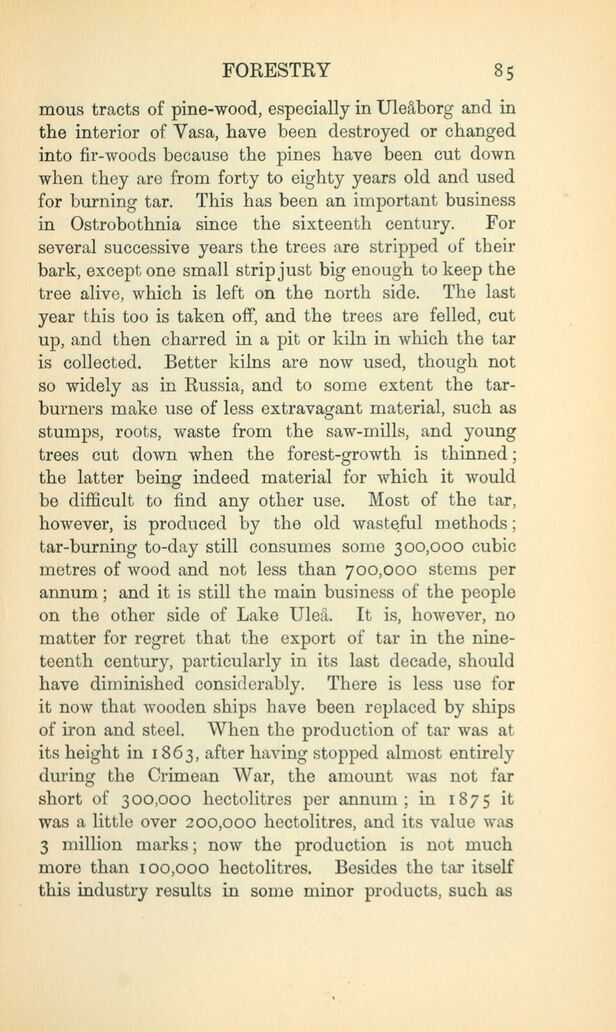
Full resolution (JPEG) - On this page / på denna sida - V. Forestry

<< prev. page << föreg. sida << >> nästa sida >> next page >>
Below is the raw OCR text
from the above scanned image.
Do you see an error? Proofread the page now!
Här nedan syns maskintolkade texten från faksimilbilden ovan.
Ser du något fel? Korrekturläs sidan nu!
This page has been proofread at least once.
(diff)
(history)
Denna sida har korrekturlästs minst en gång.
(skillnad)
(historik)
Enormous tracts of pine-wood, especially in Uleåborg and in
the interior of Vasa, have been destroyed or changed
into fir-woods because the pines have been cut down
when they are from forty to eighty years old and used
for burning tar. This has been an important business
in Ostrobothnia since the sixteenth century. For
several successive years the trees are stripped of their
bark, except one small strip just big enough to keep the
tree alive, which is left on the north side. The last
year this too is taken off, and the trees are felled, cut
up, and then charred in a pit or kiln in which the tar
is collected. Better kilns are now used, though not
so widely as in Russia, and to some extent the
tar-burners make use of less extravagant material, such as
stumps, roots, waste from the saw-mills, and young
trees cut down when the forest-growth is thinned;
the latter being indeed material for which it would
be difficult to find any other use. Most of the tar,
however, is produced by the old wasteful methods;
tar-burning to-day still consumes some 300,000 cubic
metres of wood and not less than 700,000 stems per
annum; and it is still the main business of the people
on the other side of Lake Uleå. It is, however, no
matter for regret that the export of tar in the
nineteenth century, particularly in its last decade, should
have diminished considerably. There is less use for
it now that wooden ships have been replaced by ships
of iron and steel. When the production of tar was at
its height in 1863, after having stopped almost entirely
during the Crimean War, the amount was not far
short of 300,000 hectolitres per annum; in 1875 it
was a little over 200,000 hectolitres, and its value was
3 million marks; now the production is not much
more than 100,000 hectolitres. Besides the tar itself
this industry results in some minor products, such as
<< prev. page << föreg. sida << >> nästa sida >> next page >>